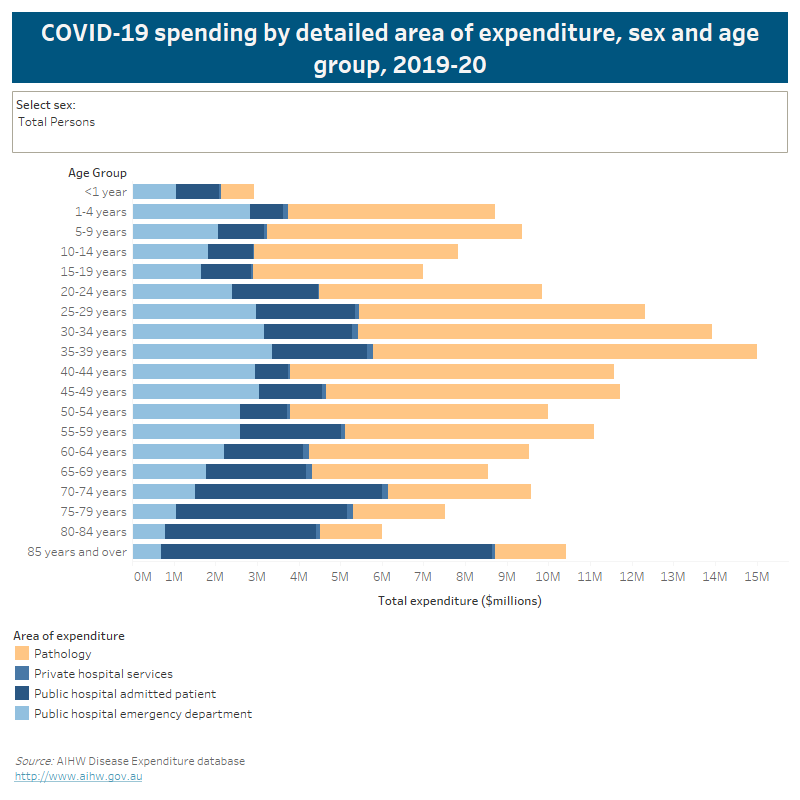COVID–19
The Coronavirus disease 2019 (COVID–19) pandemic has been one of the biggest public health challenges Australia has faced since the Influenza pandemic of 1918 around 100 years ago. COVID–19 has been included as a new infectious disease within the ABDS conditions and in this study it captures the estimated spending that can be identified by age group and sex for patients who were confirmed or suspected COVID–19 positive patients that were treated in either a public hospital emergency department, public hospital admitted patient or in a private hospital. It also includes the estimated spending in cases where patients suspected they had COVID–19 but where testing ruled this out. Pathology testing for COVID–19 claimed through the MBS has also been included. It excludes spending on MBS items where the ‘service is provided to a person who is a patient at risk of COVID–19 or where the medical practitioner is a health professional at risk of COVID–19 virus. It also excludes COVID–19 related public health program expenditure.
In 2019–20, an estimated $183 million was spent on COVID–19 to treat patients admitted to public hospitals, treated in public hospital emergency departments, private hospitals and pathology testing for COVID–19. Spending for COVID–19 was distributed across all age groups but was highest for both males and females in the 30–39 age groups.
The following interactive data visualisation can be used to see spending on COVID–19 by sex, age group and area of expenditure. Data used to create the visualisation can also be downloaded as an Excel workbook.
|
This visualisation looks at COVID-19 spending by area of expenditure, sex and age group in 2019-20. Adults aged 35-39 years had the highest expenditure due to COVID-19. |

The costs identified as COVID–19 in the disease expenditure database are part of a wider set of COVID–19 payments many of which are unable to be identified by age group and sex at this point in time. These payments include:
- Australian Government payments to the state and territory health authorities under the National Partnership on COVID–19 Response (NPCR)
- Australian Government Department of Health and Aged Care payments related to COVID–19 that are outside of the NPCR including programs for private hospitals, medical services, community health, pharmaceuticals, public health, administration, health research, health workforce, capital and aged care
- State and territory government health authority payments under the NPCR
- Estimated costs for out-of-pocket payments for respirators, face masks and shields.
The Health expenditure article within the report Australia’s Health 2022 presents the costs from both the Australian and state and territory governments in response to COVID–19. In 2019–20, spending on the National Partnership on COVID‑19 Response (NPCR) was estimated to be $4.5 billion in current prices ($2.5 billion by the Australian Government and $2.0 billion by state and territory governments) the majority of which is for public health expenditure which is excluded from this report.
Next year the AIHW plans to release a report looking in further detail at the health and aged care spending related to COVID–19 including international comparisons and key health outcomes from the pandemic to date. This report will look at both the direct and indirect COVID–19 spending related to health and aged care, including spending from the Australian Government, state and territory governments and the private sector.


